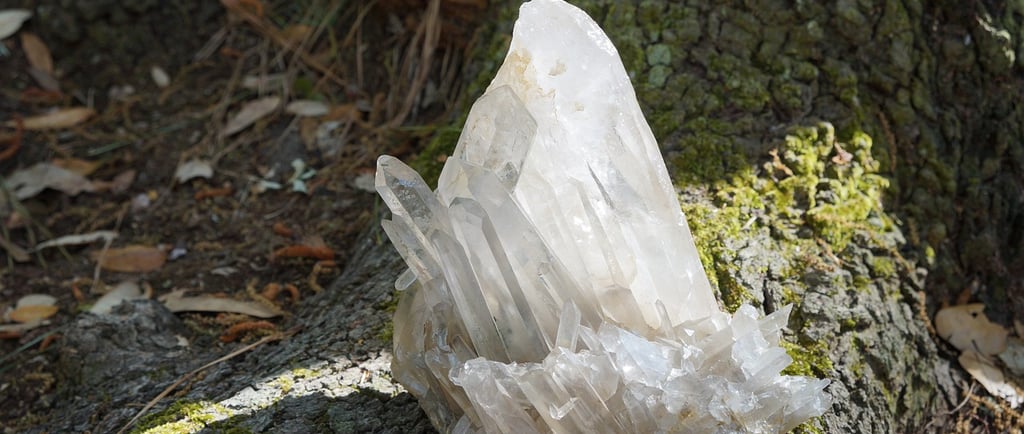The Quartz Revolution ⏱️ Modern Timekeeping
Stories About Time: Measuring Moments Through History ⏳🌞🌕 from the chapter "Towards an Understanding of Linear Time" from the History Album. In this chapter we invite children to a journey through the fascinating evolution of timekeeping. Starting with observing the Sun🌞, and people who first noticed the movement of shadows to mark the day, to the people who noticed the phrases of the Moon 🌙, and tracked the lunar cycle to create months, these stories uncover humanity’s inventive ways of measuring moments.Children will marvel at ancient innovations, like sundials and lunar calendars, and explore cultural contributions, such as candle clocks 🕯️ and water clocks 🌊, that paved the way for modern timekeeping. Each story weaves history, science, and culture, showing how humans connected with the natural world to organize their lives. 🌿✨Through these narratives, children will see time not just as a number on a clock, or passing month on the callendar, but as a rich legacy of human curiosity and creativity. With hands-on activities like building sundials and journaling moon phases, they’ll become modern-day timekeepers, inspired to ask, “How did people measure time before clocks?” and “What can I discover about time?”This vivid exploration links the past to the present, sparking imagination and a deeper appreciation for the ingenuity of those who came before us. 🌍✨
HISTORY STORIES
12/19/20243 min read


Do you remember how John Harrison’s marine chronometer 🌊 helped sailors navigate the wild oceans with precision, like a GPS of its time? It was a masterpiece, but even it couldn’t measure the tiniest fractions of time with the incredible precision we have today.
People began to wonder: Could there be a clock even more accurate? What if there was a way to measure time that didn’t rely on swinging pendulums or ticking gears?
Just about 100 years ago, in the 1920s—a time of lively jazz music 🎷, speedy cars 🚗, and exciting new ideas—here was a clever scientist named Warren Marrison who loved to discover how things worked. One day, he found something truly magical: quartz crystals! 💎✨
Now, you might be wondering, what’s so special about quartz? 👏 Quartz 👏 is a type of shiny crystal that you might find in a rock or gemstone 💎. Well, imagine a shiny crystal that looks like a little jewel. When you give it a tiny zap of electricity ⚡, it starts to shake—really, really fast!
It’s like the crystal starts doing its own little dance 🕺, Can you see how this happens in the diagram?The quartz crystal is shaped as a tunning fork and given a tiny zap of electricity. ⚡and starts exactly 32,768 times every single second! 😲 That’s so fast, you couldn’t count it even if you tried. But clever inventors figured out a way to let tiny machines count those vibrations for us, turning them into super-accurate ticks of time! ⏱️ Tick-tick-tick-tick-tick. That’s faster than a hummingbird flaps its wings! 🐦✨
The first quartz clock was built 2 years after Morrison discovered the secret powers of the quartz crystal in 1927. It didn’t look anything like the wristwatches or wall clocks we have today. Oh no, it was HUGE! Imagine a machine as big as your dining table 🍽️, with wires, circuits, and a shiny quartz crystal at its heart 💎. But despite its size, it was the most accurate clock the world had ever seen.
The Quartz Clock was a total game-changer! 🎉 For the first time ever, time could be measured down to the tiniest fraction—a millisecond! That’s like catching the blink of an eye! 👀💨 Scientists used quartz clocks for their experiments 🔬, radio stations used them to sync up their broadcasts 📻 so people everywhere could hear the same music at the same time, and before long, quartz clocks became the go-to way to tell time. ⏰✨ It was like having the most reliable friend who never, ever ran late! 🕰️🌟
But here’s where it gets even more fun! Inventors didn’t stop there. They kept shrinking the quartz clock, making it smaller and smaller. By the 1940s, they fit into wristwatches, and by the 1970s, quartz watches became affordable for almost everyone! ⌚✨ Today, quartz clocks are in everything—your phone 📱, your microwave ⏲️, even the car dashboard 🚘! Can you believe that a tiny crystal is ticking away, making sure you’re never late?
💭 Can you believe it? A tiny crystal working so hard to keep you on time! Quartz clocks are so precise that they’re used for timing the fastest races in the world 🏃♀️🏎️, processing enormous amounts of data in computers 💻, and even guiding airplanes safely across the skies ✈️. Isn’t that incredible?
Now you might think people were satisfied and stopped looking for better ways to measure time. Of course not! Scientists, with their curious minds 🧠🔬, started asking even bigger questions: “What if we could measure time not with gears ⚙️, pendulums ⏳, or even crystals 💎, but with the tiniest particles in the universe?" ⚛️✨
What did they discover? That’s a story for another day… ⚛️✨
Follow-Up Activities:
1. Experiment with Vibrations:😲✨
• Use a rubber band to feel vibrations when you pluck it. Imagine how much faster quartz vibrates!
2. Discover More About Crystals:🔍💎🌟
• Research more about crystals like quartz. What other magical things can they do?
3. Disassemble and Discover:🛠️🔧✏️
• Find an old quartz clock or watch (with adult supervision) and carefully take it apart. Identify the quartz crystal and other parts, and create a labeled diagram showing how the clock works!
This story is part of the following Clock Stories Series which can be turned into Drama Play or Storybook Compilation.
Ancient Timekeeping
🌞 The Sundial ~3500 BCE
🌊 The Water Clock ~1500 BCE
🏛️ The Tower of the Winds ~50 BCE
Medieval Timekeeping
🕯️ The Candle Clock ~980 CE
🌌 Su Sung’s Astronomical Water Clock ~1092 CE
⏳ The Hourglass Sand Masters ~14th Century
🛎️ The Mechanical Church Bells~14th Century
Science in Timekeeping
🌟 Astronomical Marvel: The Prague Clock ~1410 CE
🌍 Galileo’s Pendulum Discovery ~1602 CE
Modern Timekeeping
With Montessori joy,
Vanina 😊

